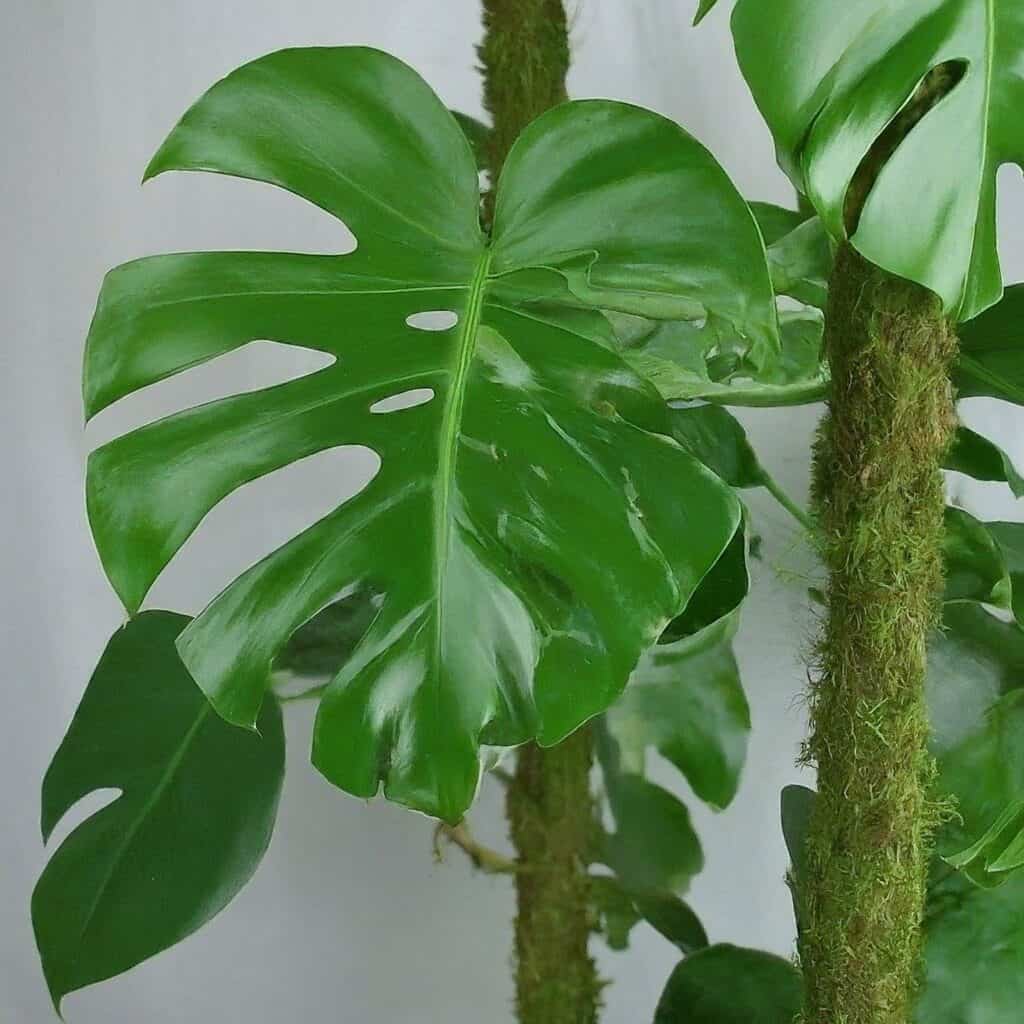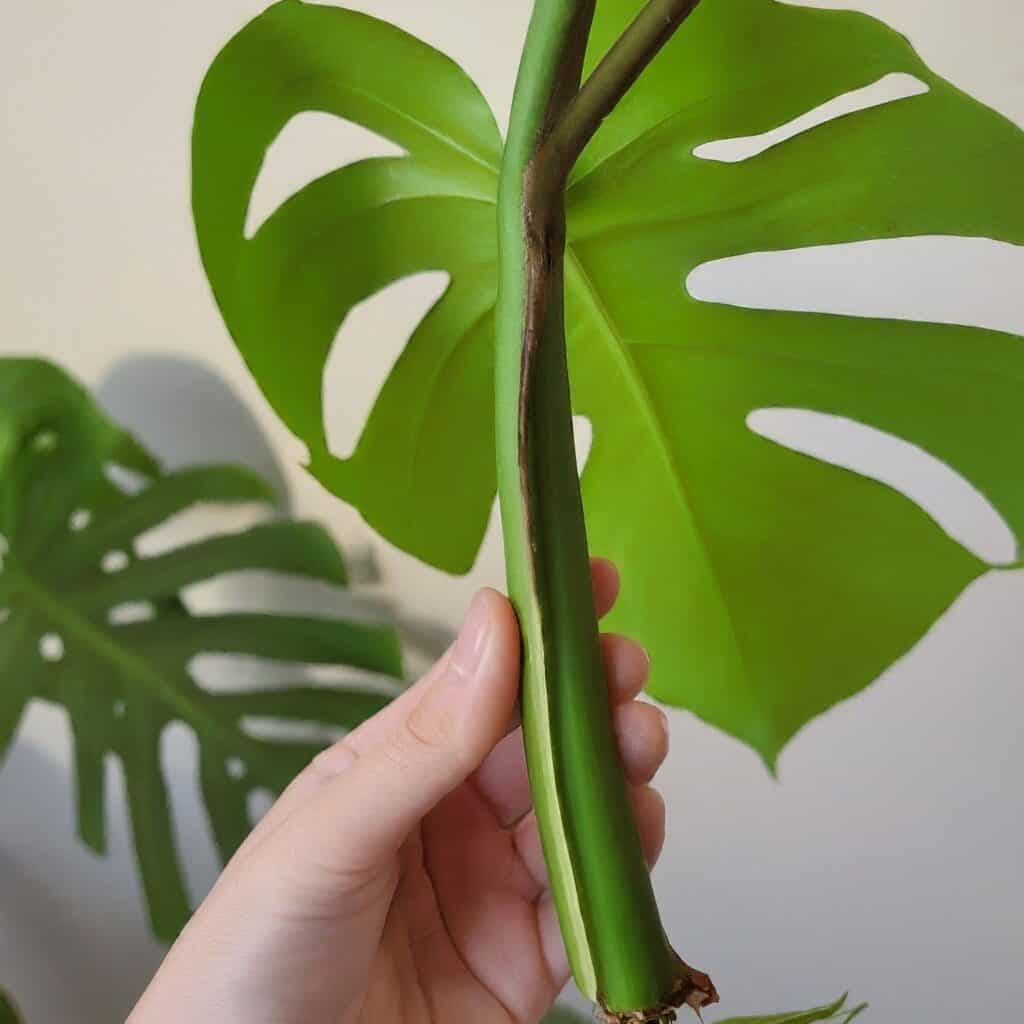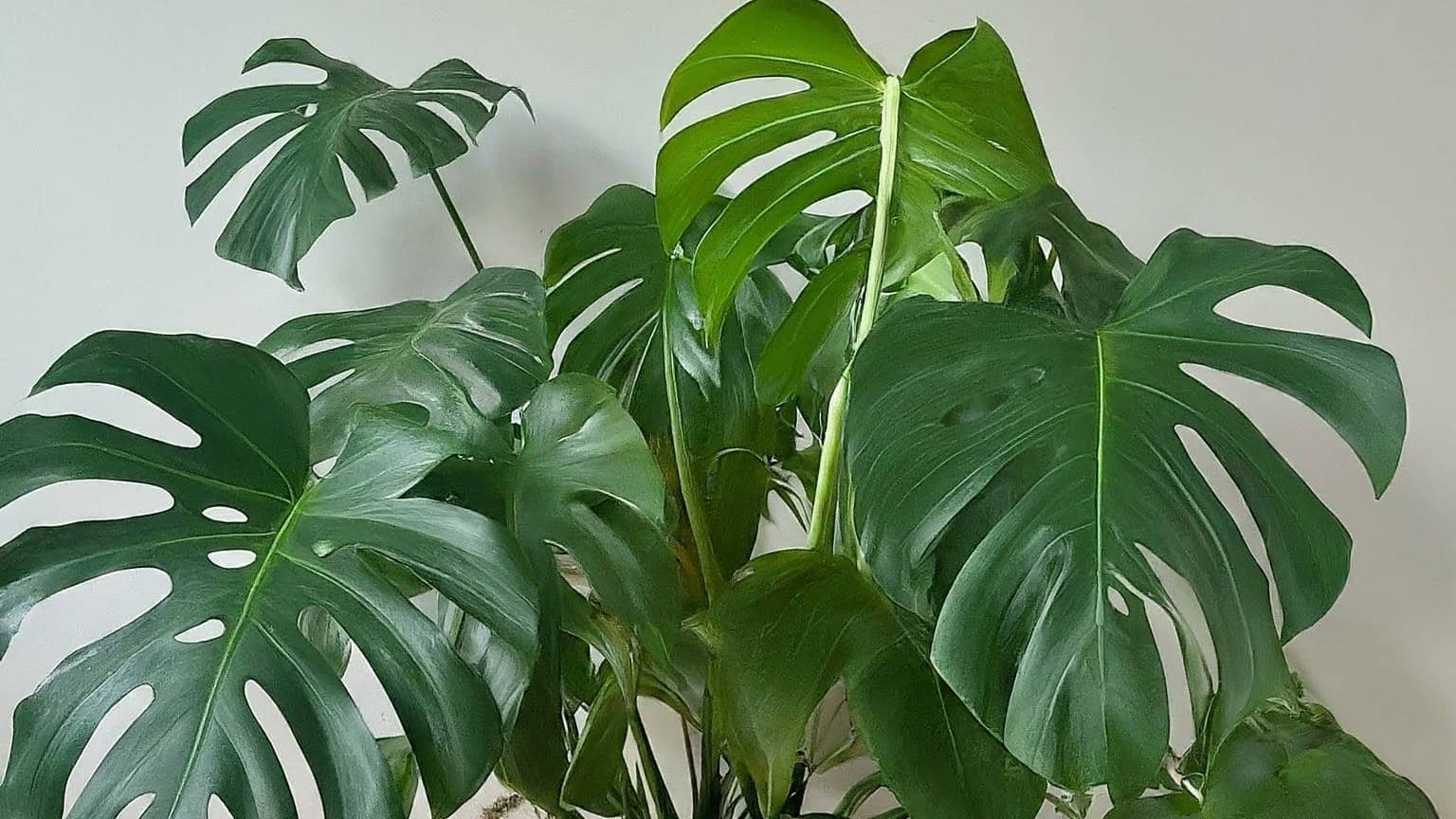Step into the world of indoor greenery, and you’ll quickly encounter a plant that captures hearts and transforms spaces like no other—the Monstera deliciosa. With its majestic presence and iconic split leaves reminiscent of Swiss cheese, this tropical wonder has earned its place as a beloved staple in homes and interior design schemes worldwide. In this article, we’ll embark on a journey to explore the allure of the large Monstera plant, uncovering the secrets of caring for and propagating this magnificent specimen. Whether you’re a seasoned plant enthusiast or a newcomer to the world of indoor foliage, prepare to be enchanted by the grandeur of the Monstera deliciosa.
Contents
6 Varieties of Large Monstera Plants:

Within the realm of the large Monstera plant, several captivating variations offer unique twists on the classic Swiss cheese plant. Let’s delve into some of the notable types:
Monstera Deliciosa:
The standard Monstera deliciosa boasts large, glossy leaves with iconic split patterns, making it a timeless favorite among plant enthusiasts.
Monstera Deliciosa ‘Variegata’:
Characterized by stunning variegated foliage, the ‘Variegata variety showcases leaves adorned with creamy-white streaks or patches, adding a layer of visual interest to its tropical allure.
Monstera Deliciosa ‘Thai Constellation’:
With marbled white and green leaves resembling a starlit sky, the ‘Thai Constellation cultivar offers a mesmerizing take on the classic Monstera deliciosa, making it a prized addition to any plant collection.
Monstera Deliciosa ‘Borsigiana’:
Known for its slightly smaller size compared to the standard Monstera deliciosa, the ‘Borsigiana’ variety features similarly striking foliage but in a more compact package, making it ideal for smaller spaces.
Monstera Deliciosa ‘Albo Variegata’:
This rare and sought-after variety showcases leaves adorned with striking white variegation, creating a stunning contrast against the dark green foliage and adding a touch of elegance to any indoor setting.
Monstera Deliciosa ‘Adansonii’:
Although not as large as the standard Monstera deliciosa, the ‘Adansonii’ variety, also known as the Swiss cheese vine, features smaller, more intricately fenestrated leaves, perfect for cascading from hanging baskets or climbing up trellises.
These are just a few examples of the diverse array of large Monstera plants available, each offering its own unique charm and aesthetic appeal. Whether you’re drawn to variegated patterns, marbled foliage, or smaller leaf sizes, there’s a Monstera variety to suit every taste and style preference.
Care Tips for the Large Monstera Plant:
Caring for a large Monstera deliciosa requires attention to several key factors to ensure its health and vitality
Light:
Position your large Monstera plant in bright, indirect light to facilitate optimal growth. Direct sunlight should be avoided to prevent leaf scorching. Choose a location near a window with filtered sunlight or in a well-lit room to ensure adequate light levels. Proper light exposure is essential for photosynthesis, promoting healthy leaf development and vibrant foliage.
Watering:
Maintain soil moisture levels consistently, ensuring a moist but not waterlogged environment for your Monstera deliciosa. Water thoroughly when the top inch of soil feels dry to the touch, typically every 1-2 weeks, allowing water to penetrate deeply into the root zone. It’s crucial to ensure proper drainage to prevent the onset of root rot, a prevalent issue associated with excessive watering. Monitoring soil moisture levels regularly and adjusting watering frequency according to environmental conditions is paramount in safeguarding your plant’s health and vitality. By implementing these mindful watering practices, you’ll provide optimal conditions for your Monstera to flourish and thrive in its indoor sanctuary.
Humidity:
Monstera deliciosa thrives in high-humidity environments akin to its native rainforest habitat. Boost humidity levels by misting the leaves regularly or positioning a humidifier nearby. Another method is to utilize a pebble tray: place the pot on a tray filled with water and pebbles. Maintaining adequate humidity not only prevents leaf browning but also fosters lush growth, mimicking the plant’s natural habitat.
Temperature:
Maintain a warm, tropical temperature range between 65°F to 80°F (18°C to 27°C) for your Monstera. Avoid exposing the plant to cold drafts or sudden temperature fluctuations, as this can cause stress and hinder growth. Consistent temperatures provide the stability necessary for optimal growth and development, ensuring your Monstera thrives in its indoor environment.
Soil:
Opt for a porous potting blend infused with organic nutrients. A blend comprising peat moss, perlite, and orchid bark fosters an optimal environment for Monstera deliciosa growth. Refreshing the soil through repotting every 1-2 years facilitates root expansion and rejuvenates vitality. Ensuring the soil composition promotes sufficient air circulation and drainage safeguards against the risk of root rot caused by excessive moisture accumulation.
Fertilization:
Nourish your Monstera deliciosa by administering a balanced liquid fertilizer diluted by half every 4-6 weeks throughout the active growing phases of spring and summer. Scale back on fertilization during the autumn and winter months when growth naturally decelerates, allowing the plant to rest. Consistent fertilization delivers vital nutrients essential for robust growth, fostering the plant’s well-being and vigor, while also enhancing its resilience against environmental stressors. This thoughtful approach to fertilization ensures your Monstera thrives year-round, gracing your living space with its lush greenery and vibrant presence.
Propagation Techniques for the Monstera Deliciosa:
Propagating the large Monstera plant allows you to expand your plant collection and share its beauty with others. Here are two common propagation methods:
Stem Cuttings:

- Begin the propagation process by carefully selecting a robust stem boasting at least one leaf node. These nodes, identifiable as small bumps on the stem, serve as the starting point for new growth.
- Using sanitized, sharp scissors or pruning shears, execute a precise cut just below the selected node. Ensure the cutting extends a few inches in length to provide ample material for rooting.
- Introduce the cutting into either water or a moist potting mix, ensuring the node remains submerged or in direct contact with the soil. Position the cutting in a warm, humid environment bathed in indirect light to facilitate optimal root development.
- Within a span of a few weeks, expect to witness the emergence of roots, typically originating from the submerged node. Once these roots have sufficiently established themselves, proceed to transplant the cutting into its designated pot filled with well-draining soil.
- Exercise vigilance in monitoring the newly transplanted cutting for indications of growth, and maintain consistent care practices to encourage its continued development. With patience and diligence, you’ll soon witness the fruition of your efforts as your propagated Monstera flourishes into a thriving specimen.
Air Layering:
- Select a healthy stem on the parent plant and identify a suitable location below a node for making an incision. Nodes are where aerial roots may emerge.
- Using a clean knife or razor blade, make a small incision just below the selected node, cutting partially through the stem.
- Pack the incision with moist sphagnum moss or a mixture of sphagnum moss and potting soil. Ensure the moss remains consistently moist but not soggy.
- Wrap the moss-covered section of the stem with plastic wrap to create a sealed, humid environment. This helps retain moisture and encourage root growth.
- Roots will typically begin to form within a few weeks at the incision site. Once roots are well-developed, the rooted section can be carefully cut below the rooted area and transplanted into its pot with well-draining soil. Provide appropriate care to the newly transplanted cutting to encourage healthy growth.
FAQs
How often should I water my large Monstera plant?
Water your Monstera when the top inch of soil feels dry to the touch. Typically, this means watering every 1-2 weeks, but frequency may vary depending on factors like temperature and humidity levels.
Can I place my large Monstera plant in direct sunlight?
While Monstera plants prefer bright, indirect light, they can tolerate some direct sunlight, especially if it’s filtered through sheer curtains. However, prolonged exposure to intense sunlight may lead to leaf burn, so it’s best to provide indirect light for optimal growth.
What should I do if my Monstera’s leaves start to turn yellow?
Yellowing leaves on a Monstera can be a sign of overwatering, underwatering, or nutrient deficiencies. Check the soil moisture, adjust watering habits if necessary, and consider fertilizing with a balanced liquid fertilizer to address any nutrient deficiencies.
How can I increase humidity for my large Monstera plant?
Increase humidity for your Monstera by misting its leaves regularly, placing a humidifier nearby, or using a pebble tray with water. These methods help recreate the high humidity levels Monstera plants thrive.
Is it normal for my Monstera to grow aerial roots?
Yes, it’s perfectly normal for Monstera plants to grow aerial roots, especially in their native rainforest habitat. These roots help the plant attach to trees and absorb moisture from the air. You can leave the aerial roots as they are or choose to trim them if they become too unruly.
Mastering Large Monstera Plant Care and Propagation
As we conclude our journey through the captivating realm of Monstera deliciosa, it’s clear that these majestic plants hold a special place in the hearts of indoor gardeners worldwide. From the classic allure of the large Monstera plant to the enchanting variations like ‘Variegata’ and ‘Thai Constellation,’ each variety adds its unique charm to interior spaces.
By understanding the essential care techniques and propagation methods outlined here, you can cultivate and propagate these tropical beauties with confidence, enriching your home with their lush foliage and timeless elegance. So, whether you’re admiring the iconic split leaves or marveling at the intricate aerial roots, let the allure of Monstera inspire you to embark on your greenery-filled adventure, transforming your living spaces into lush, verdant sanctuaries of natural beauty.

